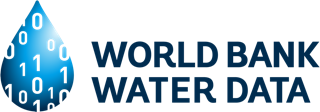The Republic of Moldova Multiple Indicator Cluster Survey was carried out in 2012 (hereinafter the 2012 Moldova MICS) by the National Centre of Public Health of the Ministry of Health in collaboration with the National Bureau of Statistics, the Scientific Research Institute of Mother and Child Health Care, the Ministry of Labour, Social Protection and Family, the Ministry of Education, the National Centre for Health Management, and the National Centre for Reproductive Health and Medical Genetics. Financial and technical support was provided by the United Nations Children’s Fund (UNICEF), with additional contribution of the Swiss Agency for Development and Cooperation and the World Health Organization Regional Office for Europe within the EU supported project on technical assistance to the health sector. The Multiple Indicator Cluster Survey (MICS) is an international household survey programme developed by UNICEF. The 2012 Moldova MICS was conducted as part of the fourth global round of MICS surveys (MICS4). MICS provides up-to-date information on the situation of children and women and measures key indicators that allow countries to monitor progress towards the Millennium Development Goals (MDGs) and other internationally agreed upon commitments. The 2012 Moldova MICS was based on a nationally representative probability sample, stratified in two stages and consisting of about 12,500 households. Fieldwork was carried out between April 17 and June 30, 2012 using four Questionnaires – the Household Questionnaire, the Questionnaire for Individual Women aged 15-49 years, the Questionnaire for Children Under Five, the Questionnaire for Individual Men aged 15-49 years, as well as a Questionnaire Form for Vaccination Records at the Health Facility. In addition to the administration of questionnaires, fieldwork teams tested the salt used for cooking in the households for its iodate content, observed the place used for handwashing, measured the weights and heights of children under the age of five, as well as the haemoglobin levels in women aged 15-49 years and children aged 6-59 months. The household response rate was 97 percent, with 89 percent, 77 percent and 96 percent response rates calculated for the women’s, men’s and under-5’s interviews respectively.


